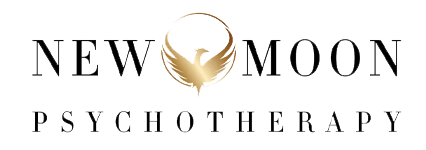What’s the Difference Between Trauma-Informed and Trauma-Focused Therapy?

Trauma can leave a deep and lasting impact on a person’s life, and not every therapeutic approach addresses it in the same way.
When you walk into a therapy session carrying the weight of past trauma, the way your therapist approaches trauma will shape not only how you feel in the room, but also how you process and begin to heal from those experiences.
If you’ve been searching for trauma therapy in Toronto, you’ve likely come across the terms trauma-informed and trauma-focused therapy. While they may sound similar, they represent very different approaches to healing. Understanding the difference can help you make the best choice for your journey forward.
Let’s take a closer look at what each approach means – and how they might feel in practice.
What Is Trauma-Informed Therapy?
Trauma-informed therapy is an approach that recognizes trauma is widespread and can shape how people interact with the world, their relationships, and even their therapy.
Trauma-informed care is now taught in all graduate training programs and can even be applied by professionals outside of therapy – such as doctors, massage therapists, chiropractors, teachers, or hairdressers.
Trauma-informed care is important because trauma is incredibly common. Nearly two in three Canadian adults have experienced at least one traumatic event in their lifetime.
In therapy, a trauma-informed therapist’s priority is creating a sense of safety for the client, allowing them to understand the impact of their experiences and to process at their own pace, without fear of retraumatization.
What does trauma-informed therapy look like in practice?
- Therapists are non-directive. You, as the client, decide what is talked about, when, and for how long.
- Therapists prioritize creating a sense of safety, allowing you to process your experiences at your own pace.
- Validation, empathy, and active listening are used to acknowledge your experiences and feelings.
- Sessions happen in a reliable environment.
- To counter the loss of control that trauma often creates, you guide the pace of your therapy and your preferences are always honoured.
- Your boundaries are always respected – you can say no or change your mind at any time.
- The therapist will check in before trying anything that could stir up strong emotions or body sensations.
Trauma-informed care is an important foundation for all therapeutic work, regardless of whether you want to work on trauma or unrelated challenges.
What Is Trauma-Focused Therapy?
Trauma-focused therapy goes beyond safety and coping. It directly addresses the trauma itself, helping clients process and resolve its impact so they can reclaim their lives.
This approach is more structured and intentional than trauma-informed therapy. Trauma-focused therapists are specially trained in well researched techniques that are proven to effectively guide clients through difficult conversations and experiences, reducing or eliminating their symptoms.
What does trauma-focused therapy look like in practice?
- The approach directly targets trauma memories, thoughts, and body responses.
- Therapists actively helps clients overcome avoidance – the natural tendency to push away painful memories or feelings that often keeps us stuck.
- Therapeutic approaches are structured to follow specific protocols that are research-backed to reduce or eliminate the symptoms of trauma, PTSD, complex trauma, and related conditions. These approaches include:
- Cognitive Processing Therapy (CPT)
- Eye Movement Desensitization and Reprocessing (EMDR)
- Prolonged Exposure and Written Exposure Therapy
- Trauma-Focused CBT (TF-CBT)
- Internal Family Systems (IFS)
- Somatic Therapy
Trauma-focused therapy builds on the foundation of trauma-informed care, adding structured, evidence-based approaches that directly address trauma memories. This combination creates the safest and most effective conditions for healing – helping reduce trauma’s grip on daily life and opening space for growth and connection.
Signs you might benefit from trauma-focused therapy
You might consider trauma-focused therapy if you:
- Experience intrusive memories, flashbacks, or nightmares related to past trauma,
- Persistently feel on edge, anxious or hypervigilant
- Have intense emotional reactions like sudden anger, sadness, or shame,
- Avoid situations, people, or places that remind you of past trauma,
- Struggle with trust, intimacy, or forming close relationships,
- Feel “stuck” in guilt, shame, or negative self-beliefs,
- Feel overwhelmed or triggered by everyday stress,
- Notice physical symptoms like tension, headaches, or stomach issues,
- Found previous therapy supportive but not deep enough to resolve trauma.
If these feel familiar, trauma-focused therapy may help you move beyond surviving towards lasting healing.
Example of Trauma-Informed vs. Trauma-Focused Therapy in Practice
To really understand the difference between trauma-informed therapy and trauma-focused therapy, it helps to see what each might look like in practice.
Let’s meet Alex.
Alex is in their 30’s and has a history of childhood trauma. They comes to therapy because they are struggling with dating. They deeply want a partner but are scared to trust others and often feel like they sabotage relationships.
Let’s walk through what Alex’s healing journey might look like with a trauma-informed therapist vs. a trauma-focused therapist.
Alex’s trauma-informed therapy example
Alex’s therapist is careful to create a sense of safety and trust. During their first few sessions they take Alex’s lead, allowing them to share as much or as little of what is bothering them and their past history.
When Alex becomes upset in a session, the therapist pauses, normalizes their reaction, and guides them through grounding strategies like noticing their breath or connecting with their senses. Together, they also practice coping skills – like easing anxiety before a date or learning to notice red flags without shutting down.
Over time, as Alex feels more stable, the therapist gently helps them connect past experiences of betrayal or abuse to Alex’s current fears around trusting others. With practice, Alex begins to use these skills in real life: when Alex is triggered in a future relationship, they can use the strategies they’ve learned to ground themselves and remind themselves, “This reaction makes sense, but it doesn’t have to control me”.
Alex’s trauma-focused therapy example
Alex still receives safety and support, but the work is more structured and intentionally designed to target the trauma that’s been holding them back. For example, during Alex’s intake, the therapist asks questions to understand their past experiences, while giving Alex full control over how much or how little detail they want to share. This ensures Alex feels safe and respected while beginning to connect their current challenges with earlier experiences.
Once the therapist understands Alex’s goals and history, and once trust is built, the therapist may use evidence-based approaches like EMDR or Cognitive Processing Therapy (CPT), or Somatic Therapy.
With CPT, the therapist helps Alex identify all the beliefs that are keeping them stuck in their trauma. For example, “I am not lovable”. Togethe,r they explore moments that contradict “I’m not lovable” – like times when someone showed Alex genuine care. Gradually, Alex learns to reframe this belief into something more accurate and compassionate: “I was hurt as a child, but that doesn’t mean I’m unlovable. I deserve a healthy connection.”
With EMDR, the therapist might guide Alex to reprocess difficult memories using a technique called Bilateral Stimulation. As those memories lose their overwhelming emotional charge, the belief “People will hurt me” starts to feel less automatic and less defining.
With somatic therapy, Alex learns to notice where fear and tension show up in their body — such as a tight chest before going on a date or a knot in their stomach when someone shows affection. With guidance, they practice grounding, movement, and breathwork to release these physical responses. This not only reduces the intensity of trauma triggers but also helps Alex feel more present and safe in their body during new, positive experiences.
With time and consistent practice, Alex notices a shift. Instead of being controlled by fear and old wounds, they begin to feel safer in relationships, more trusting of their own judgment, and more open to genuine intimacy. If Alex tries to think of their past experiences, they may feel some difficult emotions, but those emotions don’t come up so frequently and without cause anymore.
So which is better: Trauma-Informed or Trauma Focused Care?
Neither is better – they’re just different. Both approaches have value and that value may vary based on where you are in your healing:
- Trauma-informed therapy ensures safety, validation, and boundaries.
- Trauma-focused therapy gives you the tools to actively process and heal from trauma.
At New Moon Psychotherapy, we combine both: Each of our therapists is trained in trauma-focused therapy. This means we don’t just understand trauma – we have the tools and training to help you process it directly and move toward healing. At the same time, we also bring a trauma-informed lens, so you’ll always feel safe, respected and in control.
If you’re not ready for a trauma-focused approach, our therapists will never push you. When you’re ready, we’re here to guide you along every step of your healing journey.


